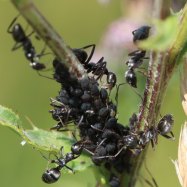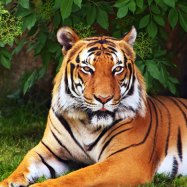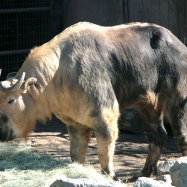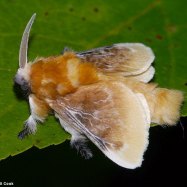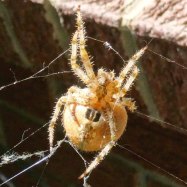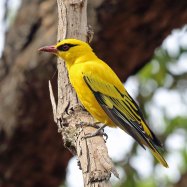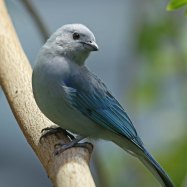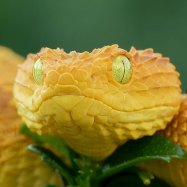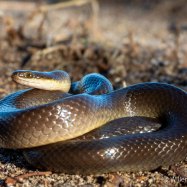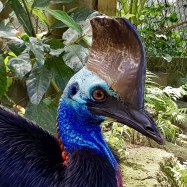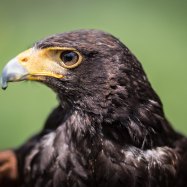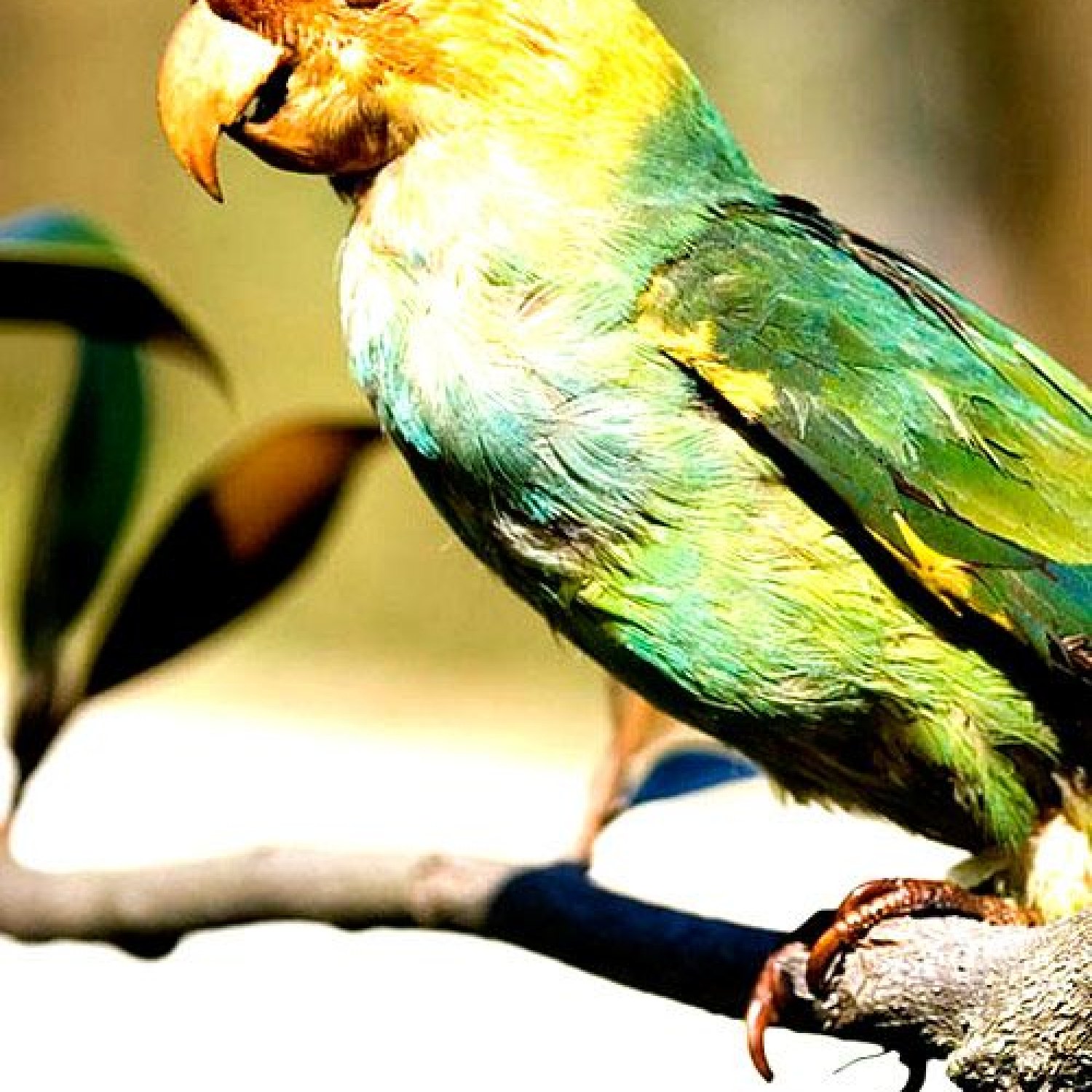
Carolina Parakeet
32-34 cm (12.6-13.4 inches)
Did you know about the Carolina Parakeet? This extinct species was a medium-sized parrot with a 32-34 cm long body and long tail. Belonging to Family Psittacidae, they were once widespread in the US. Sadly, due to habitat destruction and hunting, they are no longer found in the wild. Let's spread awareness and protect our precious animal species. #CarolinaParakeet #endangeredspecies #animalconservation
Animal Details Summary:
Common Name: Carolina Parakeet
Kingdom: Animalia
Habitat: Woodlands, swamps, forests
The Lament of the Lost Bird: Carolina Parakeet
With its bright green plumage, yellow head, and orange face, the Carolina Parakeet was a sight to behold. This medium-sized parrot was once abundant in the woodlands, swamps, and forests of the eastern and southeastern United States. However, today, it is only a distant memory, as the last known Carolina Parakeet died in captivity in 1918.The scientific name for this beautiful bird is Conuropsis carolinensis, but it is commonly known as the Carolina Parakeet Carolina Parakeet. Belonging to the kingdom Animalia, phylum Chordata, class Aves, order Psittaciformes, and family Psittacidae, this bird had a unique and fascinating history.
However, before we delve into its history, let's take a closer look at the Carolina Parakeet's physical characteristics. This bird had a bright and vibrant coloration, making it stand out among the other birds in its habitat. Its body was covered in bright green plumage, with a splash of yellow on its head and an orange face. Its long tail added to its elegant appearance, making it a favorite among birdwatchers.
The Carolina Parakeet was mostly found in the eastern and southeastern parts of the United States, with its habitat ranging from Florida to New York and west to the Mississippi River. It was a social bird and could often be spotted in large flocks of up to several hundred individuals.
These birds had a varied diet, with their feeding methods primarily consisting of nuts, fruits, and seeds. However, they were also known to feed on insects, flowers, and even crops, leading to conflict with farmers Cinnamon Bear. Despite this, the Carolina Parakeet played an essential role in the ecosystem by pollinating plants and dispersing seeds through their diet.
Sadly, despite their essential role in the ecosystem, the Carolina Parakeet's population declined rapidly due to several factors, primarily human activities. Habitat loss due to deforestation and the conversion of land for agriculture, hunting for their colorful feathers and crop protection, and the introduction of avian diseases from domesticated birds all contributed to the decline of this once abundant species.
The Carolina Parakeet also had an interesting cultural significance among the Native American tribes. It was considered a sacred bird and was often used in tribal ceremonies and rituals. The feathers were also used for decorative purposes in clothing and jewelry.
Before their unfortunate extinction, the Carolina Parakeet was also well-known in the popular culture of the time. Its unique and striking appearance made it a sought-after pet among the wealthy and elite. However, the demand for these birds in the pet trade also took a toll on their population.
Sadly, despite all efforts to conserve this species, the last known Carolina Parakeet died in captivity in the Cincinnati Zoo in 1918. This marked the end of a magnificent and unique species that had once graced the skies of North America.
The extinction of the Carolina Parakeet was a significant loss not only for the ecosystem but also for the world. It was the only species of parrot native to the eastern United States and was a vital part of the country's biodiversity. Its disappearance has left an irreplaceable void in the natural world.
Fortunately, scientists and conservationists have not lost hope in reviving the Carolina Parakeet. Efforts are being made to reintroduce its close relative, the thick-billed parrot, to its former range. This bird, with a similar appearance and behavior to the Carolina Parakeet, could potentially fill in the ecological niche left by its extinct cousin.
Moreover, there have been sightings of possible Carolina Parakeet sightings in recent years, giving hope that there may still be some hidden populations of this bird, waiting to be rediscovered. These sightings have sparked interest and renewed efforts in the search for this lost species.
Despite its extinction, the Carolina Parakeet continues to fascinate and capture the imagination of people. Its unique story has been the subject of numerous books, documentaries, and even artwork. Its bright colors and elegant appearance have made it a symbol of nature's beauty and fragility.
In conclusion, the Carolina Parakeet may no longer grace our skies with its vibrant presence, but its memory lives on. Its extinction serves as a warning of the consequences of human actions on the natural world. But it also reminds us of the importance of conservation and our responsibility to protect and preserve the diverse species that call our planet home. Let us hope that one day, the Carolina Parakeet will once again fly freely, and its story will serve as a reminder to cherish and protect all living beings.

Carolina Parakeet
Animal Details Carolina Parakeet - Scientific Name: Conuropsis carolinensis
- Category: Animals C
- Scientific Name: Conuropsis carolinensis
- Common Name: Carolina Parakeet
- Kingdom: Animalia
- Phylum: Chordata
- Class: Aves
- Order: Psittaciformes
- Family: Psittacidae
- Habitat: Woodlands, swamps, forests
- Feeding Method: Primarily seeds, fruits, and nuts
- Geographical Distribution: Present in the eastern and southeastern United States
- Country of Origin: United States
- Location: Now extinct
- Animal Coloration: Bright green plumage with yellow head and orange face
- Body Shape: Medium-sized parrot with a long tail
- Length: 32-34 cm (12.6-13.4 inches)
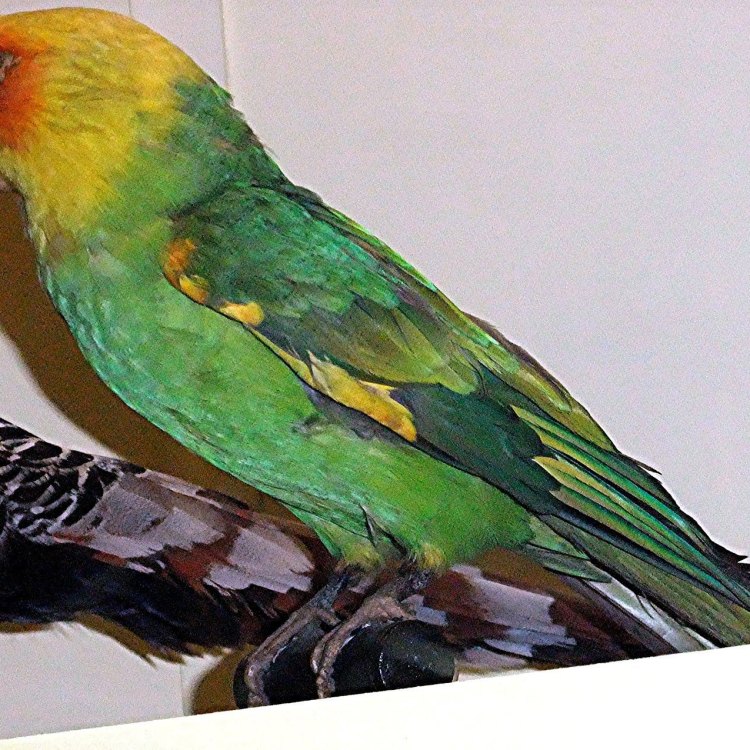
Carolina Parakeet
- Adult Size: Medium-sized
- Average Lifespan: Up to 15-20 years
- Reproduction: Breeding pairs
- Reproductive Behavior: Nest in tree cavities
- Sound or Call: Loud, harsh cries
- Migration Pattern: Non-migratory
- Social Groups: Lived in large flocks
- Behavior: Social and noisy
- Threats: Habitat loss, hunting, and trapping
- Conservation Status: Extinct (Last confirmed sighting in the early 20th century)
- Impact on Ecosystem: Unknown
- Human Use: Hunted for food and feathers
- Distinctive Features: Brightly colored plumage, strong bill
- Interesting Facts: Only parrot species native to the United States
- Predator: Humans, introduced predators
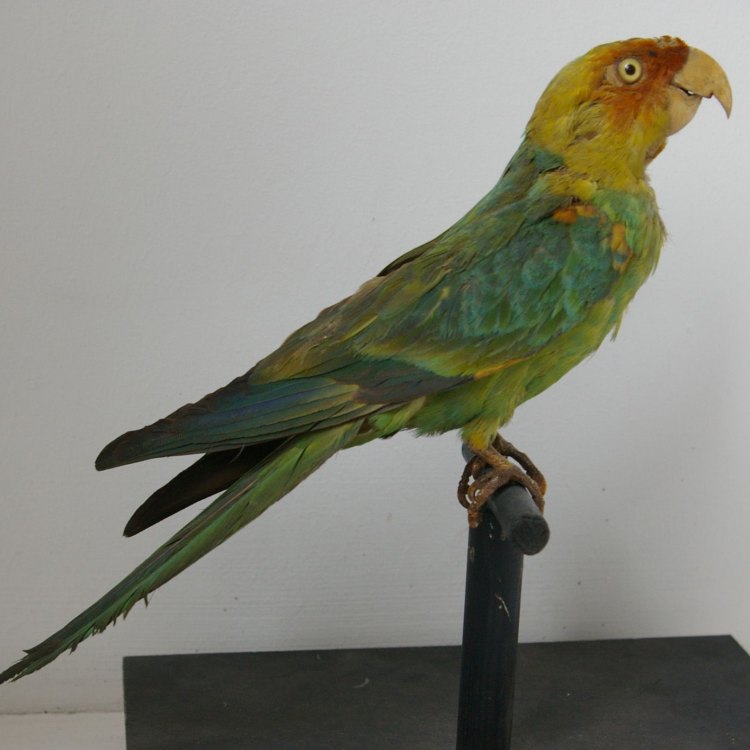
Conuropsis carolinensis
The Fascinating Story of the Carolina Parakeet
The beautiful and brightly colored Carolina Parakeet was once a common sight in the United States. However, due to a combination of human activities, this unique parrot species went extinct in the early 20th century. Its story is a tragic one, filled with wonder and mystery, as well as a cautionary tale of how human actions can have lasting effects on the environment.Let's take a closer look at this magnificent bird and uncover some interesting facts about its behavior, habitat, and most importantly, its unfortunate fate PeaceOfAnimals.Com.
Appearance and Size
The Carolina Parakeet, also known as the Carolina Conure, was a medium-sized bird, measuring about 30 cm from beak to tail. They typically weighed around 45-55 grams, making them similar in size to a domestic dove. Their plumage was a striking mix of bright green and yellow, with orange markings on their heads and cheeks. Their neck and chest feathers were a vibrant red, and they had long, pointed tails.Distinctive features of the Carolina Parakeet included a strong, curved bill, perfect for breaking open tree nuts and seeds, which constituted a significant portion of their diet. They also had zygodactyl feet, meaning they had two toes facing forward and two facing backward, enabling them to grip and climb trees with ease.
Behavior and Social Groups
Carolina Parakeets were social birds, living in large flocks of up to 100 birds. They were highly vocal and noisy, making loud and harsh cries to communicate with each other. Researchers believe that these calls were also used to alert other birds of potential danger Coelacanth.In addition to their flock, Carolina Parakeets were also known to form breeding pairs, which would nest in tree cavities. However, they were highly protective of their nesting sites and would fiercely defend them from predators, including humans. This behavior, coupled with their high reproductive rate, contributed to their resilience and once widespread distribution throughout the eastern and central regions of the US.
Threats and Extinction
Despite their strong social and reproductive behavior, the Carolina Parakeet was no match for the threats posed by humans. Habitat loss due to deforestation and urbanization, combined with hunting and trapping for their feathers and as food, led to a sharp decline in their population.Their brightly colored feathers were highly sought after for use in hats, and their meat was considered a delicacy. Farmers also viewed them as pests, as they would feed on crops such as corn and fruit trees.
Furthermore, the introduction of non-native honeybees, which compete with Carolina Parakeets for nesting cavities, may have also played a role in their decline. As a result, the last confirmed sighting of the Carolina Parakeet was in 1910 in Florida, with the last captive bird dying in 1918 at the Cincinnati Zoo.
Impact on Ecosystem and Human Use
The exact impact of the Carolina Parakeet's extinction on the ecosystem is still unknown. However, as a crucial seed disperser and pollinator, their absence may have had negative effects on tree and plant species. Carolina Parakeets were also known to provide nesting sites for other birds and small mammals, further emphasizing their role in maintaining a healthy ecosystem.On the other hand, the human use of this species had a significant impact in their decline and eventual extinction. The demand for their feathers and meat, combined with the belief that they were agricultural pests, ultimately led to their demise.
Conservation Status
The International Union for Conservation of Nature (IUCN) has categorized the Carolina Parakeet as "extinct." Despite several alleged sightings in the late 20th century, none of these have been confirmed.However, the legacy of the Carolina Parakeet lives on through numerous reports, artwork, and museum collections. This once common species may be gone, but its memory serves as a reminder of the importance of conservation efforts and the consequences of human actions on our environment.
Humans, Introduced Predators, and the Lasting Impact
While humans may have been the primary cause of the Carolina Parakeet's extinction, introduced predators also played a crucial role. The decline of their natural habitat and disruption of their social structure left them vulnerable to predators such as snakes and feral cats. These introduced predators had devastating effects on not just the Carolina Parakeet but also other native bird species.The lasting impact of the Carolina Parakeet's extinction is not just the loss of a unique and beautiful species, but also the loss of a vital part of the US's natural heritage. Their story serves as a reminder of how human actions can have far-reaching consequences, even on seemingly resilient species.
Conclusion
The Carolina Parakeet was a unique and charismatic bird, the only parrot species native to the United States. Its bright and colorful plumage, coupled with its social and vocal behavior, made it a beloved sight in the eastern and central regions of the country.Sadly, a combination of habitat loss, hunting, and the introduction of non-native predators led to its extinction in the early 20th century. The exact impact of their absence on the ecosystem is still unknown, but their story serves as a cautionary tale for future conservation efforts.
We must remember the Carolina Parakeet and its legacy in our efforts to protect and preserve our environment and its diversity. As the saying goes, "extinction is forever," and the loss of the Carolina Parakeet is a loss for us all.
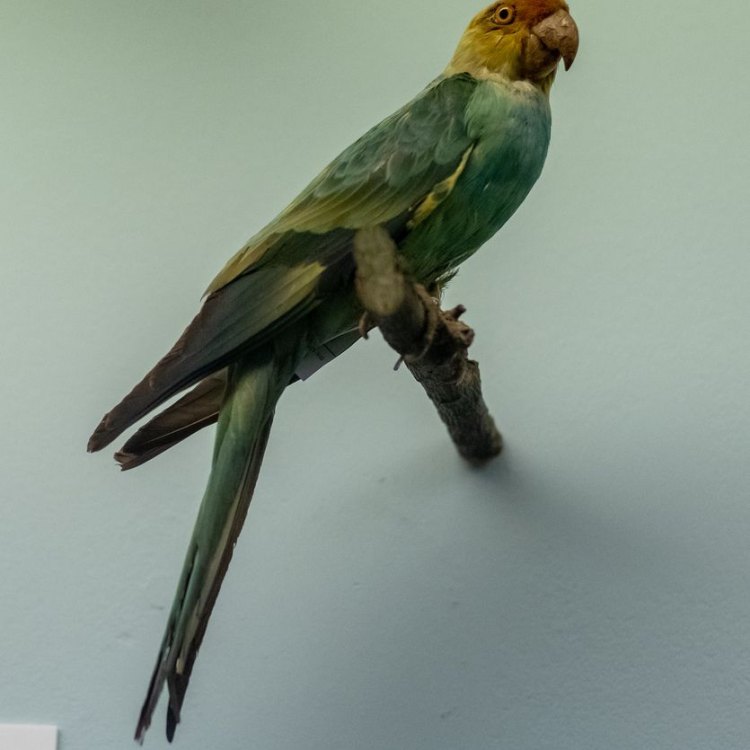
The Lament of the Lost Bird: Carolina Parakeet
Disclaimer: The content provided is for informational purposes only. We cannot guarantee the accuracy of the information on this page 100%. All information provided here may change without prior notice.

